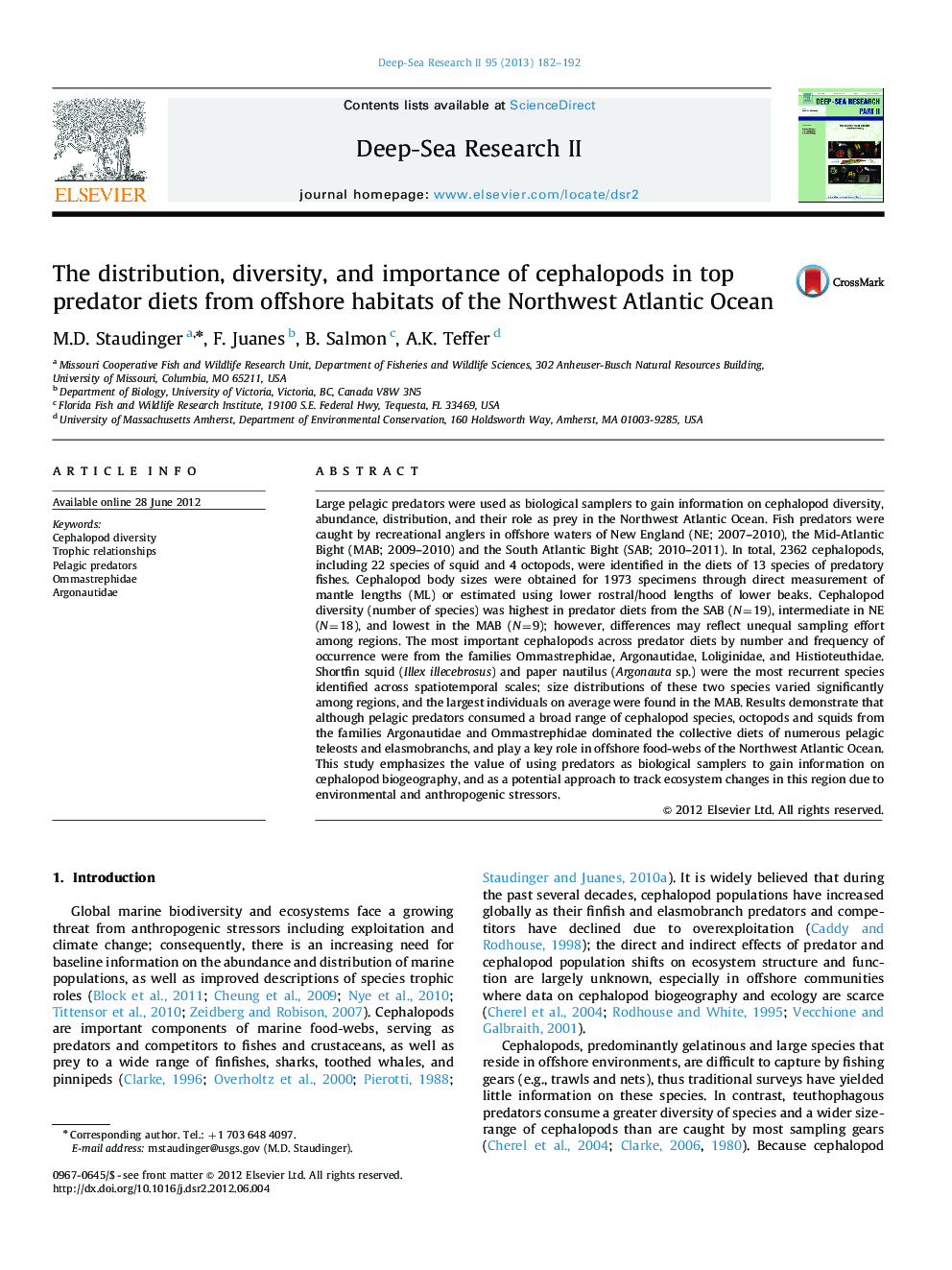| کد مقاله | کد نشریه | سال انتشار | مقاله انگلیسی | نسخه تمام متن |
|---|---|---|---|---|
| 4536559 | 1626444 | 2013 | 11 صفحه PDF | دانلود رایگان |

Large pelagic predators were used as biological samplers to gain information on cephalopod diversity, abundance, distribution, and their role as prey in the Northwest Atlantic Ocean. Fish predators were caught by recreational anglers in offshore waters of New England (NE; 2007–2010), the Mid-Atlantic Bight (MAB; 2009–2010) and the South Atlantic Bight (SAB; 2010–2011). In total, 2362 cephalopods, including 22 species of squid and 4 octopods, were identified in the diets of 13 species of predatory fishes. Cephalopod body sizes were obtained for 1973 specimens through direct measurement of mantle lengths (ML) or estimated using lower rostral/hood lengths of lower beaks. Cephalopod diversity (number of species) was highest in predator diets from the SAB (N=19), intermediate in NE (N=18), and lowest in the MAB (N=9); however, differences may reflect unequal sampling effort among regions. The most important cephalopods across predator diets by number and frequency of occurrence were from the families Ommastrephidae, Argonautidae, Loliginidae, and Histioteuthidae. Shortfin squid (Illex illecebrosus) and paper nautilus (Argonauta sp.) were the most recurrent species identified across spatiotemporal scales; size distributions of these two species varied significantly among regions, and the largest individuals on average were found in the MAB. Results demonstrate that although pelagic predators consumed a broad range of cephalopod species, octopods and squids from the families Argonautidae and Ommastrephidae dominated the collective diets of numerous pelagic teleosts and elasmobranchs, and play a key role in offshore food-webs of the Northwest Atlantic Ocean. This study emphasizes the value of using predators as biological samplers to gain information on cephalopod biogeography, and as a potential approach to track ecosystem changes in this region due to environmental and anthropogenic stressors.
Journal: Deep Sea Research Part II: Topical Studies in Oceanography - Volume 95, 15 October 2013, Pages 182–192